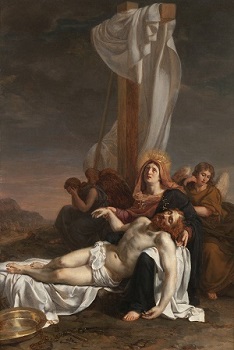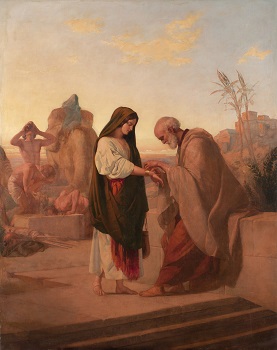

Religious artwork found renewed popularity in France and Britain during the 19th century, re-emerging at a time when many academic artists sought to reconcile the academic tradition with changing styles and ideas. The Dahesh collection includes two significant examples of how French and British artists treated religious narratives in their paintings.
During both the Revolutionary period and Napoleon’s reign, Neoclassicism had been the preferred style for portraying important historical events, although religious themes were largely ignored. When the Bourbon monarchy attained power in France in 1814, its strong support for the Catholic Church led to a vigorous revival of religious imagery. At the same time, a Romantic sensibility gained currency in France, and art critics, such as Henri Beyle (writing under the pen name Stendhal), advocated a modern art that was “to have a soul.” Paul Delaroche (1797–1856) answered Stendhal’s call for a new Romantic art, although he continued to observe the academic tradition and became one of the leaders of the juste milieu (happy medium). His Lamentation (1820), with its traditional iconography and dynamic composition, is a fine example, blending Classical ideals with the personal and emotional qualities that characterized Romanticism.
In Anglican Britain religious art had been discouraged since the Reformation and only revived as proper subject matter in the 19th century. There was no prescribed style for painting intimate religious scenes, although Neoclassical ideals continued to dominate British history painting. This is evident in the central figures of Robert Thorburn’s (1836–1885) painting, Eliezer and Rebecca at the Well (1873), who convey Neoclassicism’s timeless sense of elegance and virtue. But this painting’s exotic setting in the Holy Land also reveals another emergent current in British art, representing religious themes within the highly popular genre of Orientalism.


